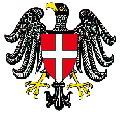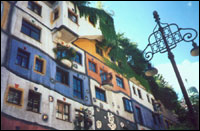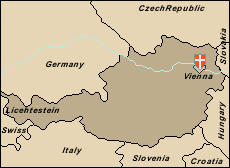| |
 |
| Welcome
to Vienna.it city vortal Network |
 |
|
 |
History: |
 |
|
Even
if the first settlement, in the place where
today the city rises, dates back to the
Third Millennium B.C., the first accurate
historical data about Vienna concern the
age of the Roman Empire and they mention
a town hall named Vindibonia. In the Tenth
Century Vienna was under the reign of the
Babenberg dinasty .This meant a period of
increasing development for the city; the
subsequent annexation of Vienna to the Habsburg
territories lead the city to a period of
prosperity. Vienna,which became the principal
seat of the Holy Roman Empire in 1438, throughout
the centuries drove back the Turkish siege:
once in 1529 and twice in 1683. It was occupied
by the Napoleonic troops in 1805 and in
1809 respectively; the Eighteenth Century
was however “ the golden Age”
of the city, which grew economically and
demographically. After the first World War
and the fall of the Empire, the Country
freed itself of the Habsburg domination
but in 1938 German troops invaded Vienna
which became a district of the Reich. Due
to the tragic events of the Second World
War the city went to rack and ruin. The
soviet army in 1945 rids Vienna of the german
invader. At the end of the war the winners
gained control overVienna and they divided
it into four parts.
The city recovered its authonomy in 1955
and through the following years it became
an important centre of international diplomacy
,thanks to the nation’s declaration
of neutrality.
|
|
 |
|
|
|
Vienna is
the “bridge” which
connects the western world to
the eastern charme, it is the
entrance hall of eastern Europe
through which you can reach
the “heart” of the
Old Continent. This is Vienna,
the beautiful Austrian capital
with its glorious imperial past.
Although its strategic position
has caused several invasions
by the Turkish army, its remarkable
importance in the greatest Empires
has left the city a cosmopolitan
spirit and a suggestive monumental
structure. The englightened
monarch of the Restoration wanted
to build a magnificent capital
and to do that, the best architects
were called into his court:
they turned the city into ”
the cradle of art”. The
unusual golden leaves of the
dome of ”Secession”,
or the intentional faults of
the houses of Hundertwasser
or the sperimental building
of Karl Marx Hof justify such
a definition.The musical fame
of Vienna has been going on
for centuries and still lasts
today. That is why the city
was nicknamed “the city
of music” or “the
capital at waltz step”. |
 |
It
is not a surprise for a capital
which was Strauss’s and
Schubert’s birthplace,
where some artists like Mozart
and Beethoven lodged and where
every year it celebrates the
new year with a fabulous concert
broadcasted all over the world.
These are the most important
reasons which induce foreign
tourists to visit the city,
together with the fascination
for the complex culture of the
city, the wealth of prestigious
collections and the delicious
pastry that has no equals. |

|
|
|
|
|
Inhabitants:1.600.000
Area: 415
square kilometres
Nation: Austrian
federal republic, of which is the capital.
Language: the
official language is german.
Domestic Currency:
running from first january 2002 euro
has become Austrian official currency.
Time Zone: in
the winter GMT + 1 hour, instead in the
summer GMT+ 2 hours.
Religion: Catholic
Majority.
Papers: For
citizens of European Union an identity card
is sufficient, but immigrants from a country
outside the European Union need a passport. |
|
|

|

|
PRINCIPAL
DISTANCES IN EUROPE: |
 |
 |
Wien
- Rome:
Wien - Paris:
Wien - Berlin:
Wien - Warsaw:
Wien - Prague:
Wien - Amsterdam:
|
1.130 km
1.265 km
630 km
795 km
290 km
1.180 km |
|
|
|
|
 |
|